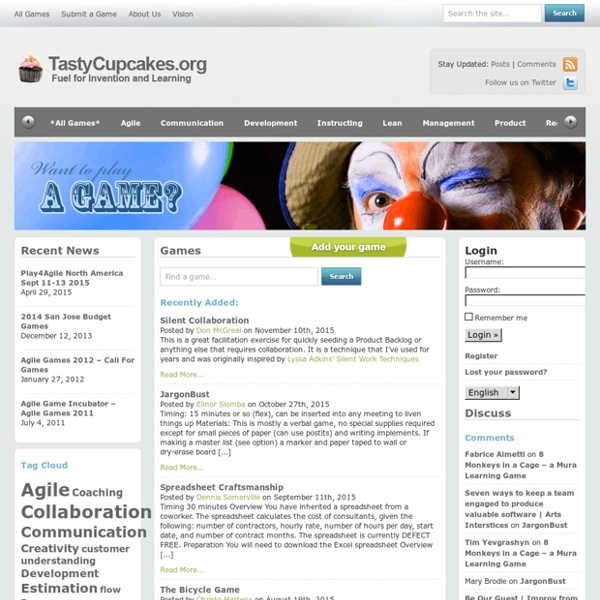



Michael Sahota – Lean, Scrum & Agile Coach – Toronto » Helping you grow your organization… People are messy: they have personalities and emotions. In this post we explore how we can embrace people’s messiness for advantage rather than have it act as a drag. Default Business Model is Mixed Engagement A recent study from Carnegie Mellon Training shows that there are very mixed levels of engagement from workers. Current estimates are that staff disengagement cost $11 billion from turnover alone. One challenge with the traditional business model is that it denies people’s individuality and feelings. In our workplaces, we do not dare to show our true and whole self. The Authentic Workplace An alternate model for our work environments is to invite people to show up as themselves – as the wonderful human beings that they are – and fully welcome them. We might imagine an environment that allow us to: Relate and connect authentically.Share and acknowledge feelings.Trust each otherFeel safeBe vulnerable Typical vs. Consider the following diagram illustrating difference between these models:
AgileIT : M?thodes Agiles & Java EE Scrum and Agile in Belgium Agile Community Content on InfoQ Research on Agile What are the most widely used .NET practices and tools? This InfoQ Research item examines the adoption level of a range of practices and tools that aim to assist .NET developers in these practices. Note that we have focussed only on these practices - there are other tools such as reflectors, productivity tools, frameworks etc. which we are not covering in this research. Biggest Impediments for Effective Agile Adoption? This InfoQ Research item aims to rank the impediments to agile adoption in organisations. What are the Most Important and Adoption-Ready Agile Practices? InfoQ have launched a new community driven research tool, and one of the areas we want to examine is the relative importance, and level of use in teams of a variety of agile practices, covering both social and technical practices that teams may be using.
Kanban and Scrum - making the most of both Scrum and Kanban are two flavours of Agile software development - two deceptively simple but surprisingly powerful approaches to software development. So how do they relate to each other? The purpose of this book is to clear up the fog, so you can figure out how Kanban and Scrum might be useful in your environment. Part I illustrates the similarities and differences between Kanban and Scrum, comparing for understanding, not for judgement. There is no such thing as a good or bad tool – just good or bad decisions about when and how to use which tool. Part II is a case study illustrating how a Scrum-based development organization implemented Kanban in their operations and support teams. Consistent with the style of “Scrum and XP from the Trenches”, this book strikes a conversational tone and is bursting with practical examples and pictures. This book includes: 120 pages, 6" x 9", ISBN: 978-0-557-13832-6 Free download Buy the print version for $22.95 Translations Table of contents
Scrum and XP from the Trenches The tricky part to agile software development is that there is no manual telling you exactly how to do it. You have to experiment and continuously adapt the process until it suits your specific situation. This book aims to give you a head start by providing a detailed down-to-earth account of how one Swedish company implemented Scrum and XP with a team of approximately 40 people and how they continuously improved their process over a year's time. Under the leadership of Henrik Kniberg they experimented with different team sizes, different sprint lengths, different ways of defining "done", different formats for product backlogs and sprint backlogs, different testing strategies, different ways of doing demos, different ways of synchronizing multiple Scrum teams, etc. They also experimented with XP practices - different ways of doing continuous build, pair programming, test driven development, etc, and how to combine this with Scrum. This book includes: Free download Translations
Scrum et XP depuis les tranchées - Comment nous appliquons Scrum Ce livre fait partie de la collection de livres InfoQ "Enterprise Software Development". L'apport du livre d'Henrik est que, si vous suivez les pratiques décrites, vous aurez un Directeur de produit, des estimations pour votre Backlog de produit, une Courbe du reste à faire, et vous connaîtrez la vélocité de votre équipe ainsi que de nombreuses autres pratiques essentielles pour un Scrum dangereusement opérationnel. Vous passerez le test Nokia pour Scrum et serez digne de l'investissement dans votre travail. Si vous êtes une startup, vous pouvez même bénéficier du financement d'une société capital-risque. Vous serez peut-être le futur du développement logiciel et le créateur d'une nouvelle génération d'éminents logiciels. Jeff Sutherland, Ph.D., Co-Créateur de Scrum 16 commentaires Henrik Kniberg Préfaces de Jeff Sutherland, Mike Cohn Lire l'article. Article lu 10724 fois.
Second Generation Lean Product Development: From Cargo Cult to S by Don Reinertsen on Jan 22, 2010 | Summary Don Reinertsen discusses the concepts behind second generation lean product development. He shows some of the quantifiable economic trade-offs associated with queue management, batch size reduction, WIP constraints, cadence, and flow control. He explains why the ideas of lean manufacturing, though perfect for the predictable work of manufacturing, are inadequate for product developers. Bio Don Reinertsen is recognised internationally for his contribution to the management of product development. The Lean and Kanban 2009 event was created to drive further progress in software development by providing a unique opportunity to share best practices and innovation within the growing community of software engineers, managers, and executives adopting Lean and Kanban systems.